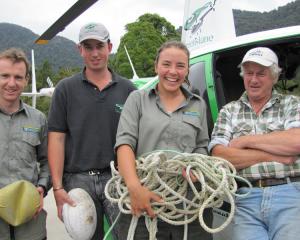Limiting the loading of nutrients is just as important as putting limits on water takes from aquifers, Environmental Science and Research principal scientist Murray Close says.
One-third of the water used in New Zealand comes from underground, and in Otago the regional council is reviewing groundwater takes before releasing a draft regional water plan later this year.
A consultation meeting will be held today in the Ettrick Hall from 1pm to 3pm.
Dr Close said in a Science Media Centre teleconference on groundwater last week that loading limits needed to be established as increasing amounts of nitrates being released could impact on human health.
His research on the effect of irrigation and dairying on groundwater had shown border strip irrigation posed a significant health risk to the farmers who used aquifers for their drinking water, but spray irrigation had little effect.
GNS Science groundwater section manager Dr Chris Daughney said allocation limits were very important, as, if too much water was taken out of an aquifer and the water table got too low, nitrate-laden water could be drawn in from other areas.
GNS's national groundwater monitoring programme showed its sites in Otago's were among the 32% that showed little or no human impact.
Nationally, 5% of aquifers showed a level of nitrates that were high enough to pose a threat to human health, he said.
While it was difficult to relate land use to groundwater quality, land use in the recharge zone, which could be far away from the aquifer, had the potential to influence groundwater quality.
National Institute of Water and Atmospheric Research assistant regional manager Graham Fenwick said nitrate contamination of groundwater also put the biodiversity of aquifers under threat.
"We may have already lost some species and considerable ecosystem function."
At today's Ettrick meeting, Otago Regional Council staff will run through the science behind a recommendation to increase the maximum groundwater take from its 2010 consented allocation of 3.02 million cubic metres a year to 3.8 million cubic metres a year.




